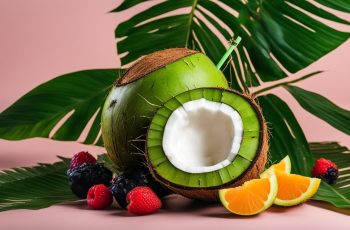It seems like everywhere you look these days, someone is trying to sell you a new fad diet or tell you what foods you should and shouldn’t be eating. So, it’s no surprise that many people wonder if M&M’s are bad for you.
After all, they are one of the most popular candies in the world! In this blog post, we’ll look closely at the ingredients in M&M’s and see if they are as bad for you as some people make them.
Are M&M’s Bad For You Or Not?
In short, yes. M&M’s are bad for you. A single serving of M&M’s (about 40 grams) contains 200 calories, 11 grams sugar, and 8 grams fat. That might not seem like a lot, but those numbers can add up quickly if you’re not careful. And let’s be honest—who only eats one serving of M&M’s?
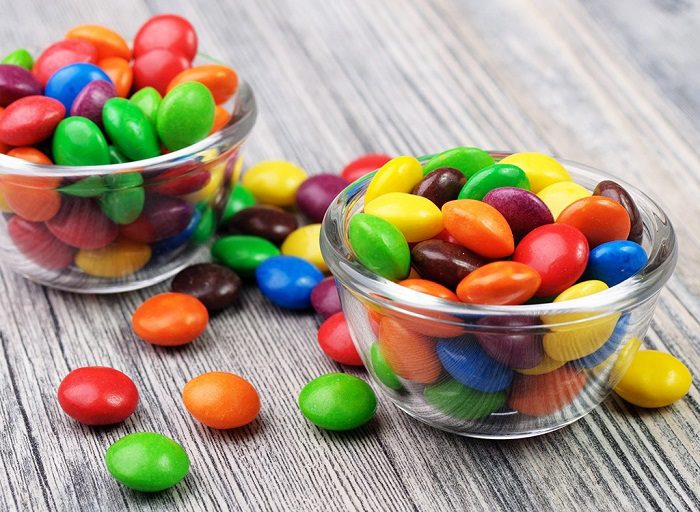
Why are M&M’s bad for you?
M&Ms are full of sugar and unhealthy fats
One of the main reasons why M&Ms are bad for you is because they are full of sugar and unhealthy fats. A single serving of M&Ms (about 28 grams) contains 13 grams of sugar and 5 grams of fat. That means that over half of the calories in M&Ms come from sugar and fat.
The unhealthy fats in M&Ms are primarily saturated fats, which can raise your cholesterol levels and increase your risk of heart disease. The high sugar content can also cause cavities and other dental problems.
M&Ms contain artificial colors and flavors
Another reason why M&Ms are bad for you is that they contain artificial colors and flavors. These chemicals have been linked to health problems like cancer, ADHD, and allergies.
The food dye called Blue #1 has been linked to cancer in animals, while the food dye Yellow #5 has been linked to ADHD in children. In addition, the artificial flavor vanillin has been linked to headaches and nausea in some people.
M&MS are high in calories
A final reason M&Ms are bad for you is that they are high in calories. A single serving of M&Ms contains 140 calories, which is about 7% of the daily recommended intake for an average adult. Therefore, if you eat a lot of M&Ms, you could easily exceed your recommended calorie intake for the day, which could lead to weight gain over time.
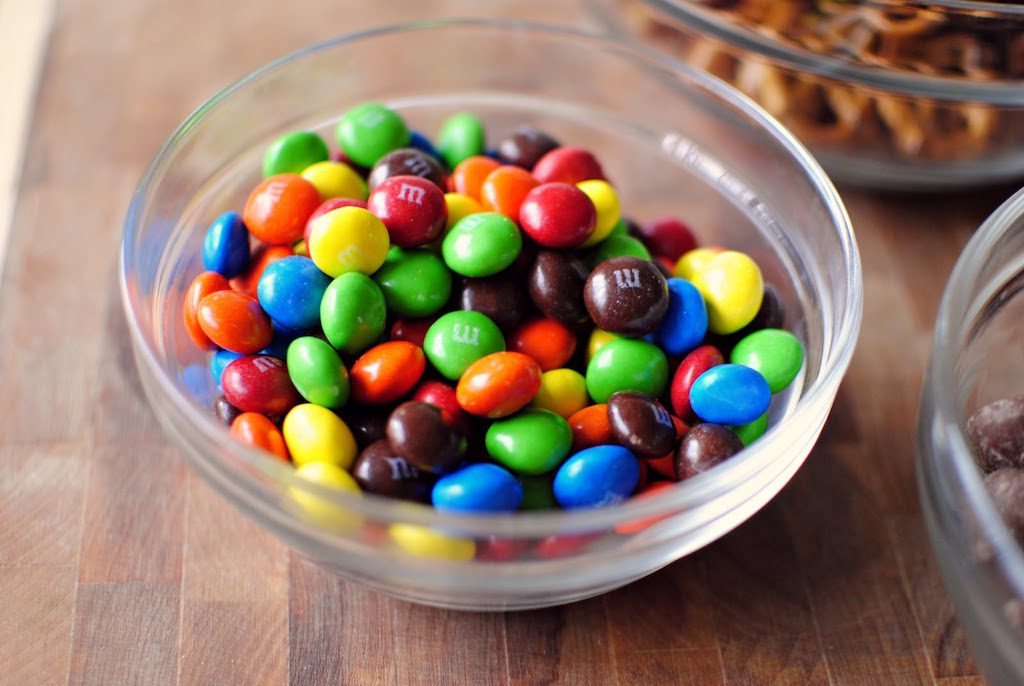
Possible short-term side effects
Increased Blood Sugar Levels
M&M’s are high in sugar which can cause a spike in blood sugar levels. This is especially true if you eat a lot of them at once or if you have diabetes. Eating too many M&M’s can also lead to feelings of anxiety, irritability, and dizziness. If you experience any of these symptoms, it is best to reach for a healthier snack.
Stomach discomfort
Another common side effect of eating too many M&M’s is stomach discomfort. This can include bloating, gas, and diarrhea. If you experience any of these symptoms, drinking plenty of fluids is best and avoiding eating M&M’s until your symptoms subside.
Dehydration
Sugar is also known to cause dehydration. When you eat sugary foods or drinks, your body has to work harder to process the sugars. This uses up more water and can leave you feeling dehydrated. Dehydration can cause fatigue, headaches, and dry mouth. So if you’re going to indulge in some M&M’s, make sure to drink plenty of water as well.
Hyperactivity
Eating large amounts of chocolate can lead to hyperactivity, especially in children. The sugar and caffeine in chocolate can cause an increase in heart rate and energy levels, resulting in restlessness and difficulty concentrating. While this effect is usually temporary, it can be disruptive for children and adults. In some cases, it may even lead to insomnia. So if you’re looking for a quick energy boost, reach for an espresso instead of a chocolate bar.
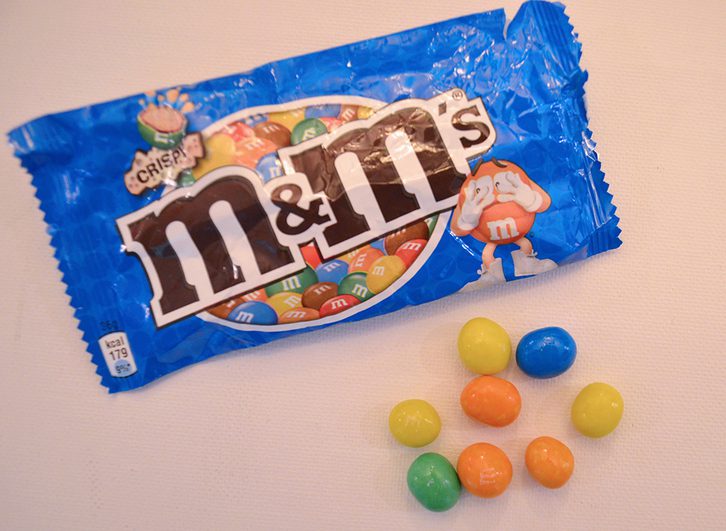
Possible long-term side effects
Weight Gain
It should come as no surprise that one of the main long-term side effects of eating M&M’s is weight gain. A single serving of M&M’s (about 10 pieces) contains 250 calories, most of which come from sugar. So if you eat a couple of servings of M&M’s daily, those calories can quickly add up and lead to weight gain. Not to mention, the more weight you gain, the more difficult it becomes to lose weight and keep it off in the future.
Type 2 Diabetes
Another long-term severe side effect of eating M&M’s is type 2 diabetes. One of the leading causes of type 2 diabetes is overeating sugar, and each serving of M&M’s contains 26 grams of sugar. That’s over half the recommended daily amount of sugar for adults! So if you eat M&M’s on a regular basis, you’re putting yourself at risk for developing type 2 diabetes.
Heart Disease
Another long-term side effect associated with eating M&M’s is heart disease. This is because heart disease is often caused by obesity and high cholesterol—both of which can be exacerbated by eating sugary snacks like M&M’s. So if you have heart disease in your family or are concerned about your heart health, it’s best to steer clear of M&M’s altogether.
Cavities
You might not think about cavities when munching on a bag of M&M’s, but those sugary little candies can cause cavities over time. That’s because the sugar in M&M’s feeds the bacteria in your mouth, which then produces acid that attacks your teeth and leads to cavities. So if you want to keep your pearly whites healthy, skip the M&M’s and opt for a more nutritious snack.
Poor Nutrition
All that sugar isn’t just bad for your waistline—it can also have an impact on your overall health since it crowds out healthier foods like fruits, vegetables, and whole grains that provide essential vitamins, minerals, and fiber. In addition, when you regularly eat sugary snacks like M&M’s instead of nutrient-rich foods, you risk developing nutritional deficiencies that can have serious consequences.
Tumors
M&M’s is a popular candy that many people enjoy. However, recent research has suggested that there may be a link between eating M&M’s and the development of tumors. The study, conducted on rats, found that those who ate M&M’s were more likely to develop tumors than those who did not eat the candy. While the study did not prove that M&M’s cause tumors, it did suggest that there may be a connection between the two. As a result, it is crucial to be aware of this possible side effect before eating M&M’s.
Endocrine Disruption
There is mounting evidence that eating M&M’s may have some serious health consequences. Endocrine disruption is one of the most well-known potential side effects of eating M&M’s. Endocrine disruptors are chemicals that can interfere with the body’s hormone system.
This can lead to various health problems, including reproductive difficulties, mood disorders, and cancer. While the long-term effects of endocrine disruptors are not fully understood, it is clear that they can pose a severe threat to human health. For this reason, it is crucial to be aware of the potential risks before indulging in a tasty treat like M&M’s.
Cancer
It’s no secret that sugar can harm our health. From causing weight gain and cavities to increasing our risk of heart disease, sugar is linked to various health problems. However, you may be surprised to learn that sugar can also cause cancer.
While the link between sugar and cancer is not yet fully understood, studies have shown a connection between the two. So how does sugar promote cancer growth? First, sugar provides the body with fuel in the form of glucose, which cancer cells use to grow and multiply.
In addition, sugar weakens the immune system, making it less able to fight off cancer cells. And finally, sugar increases inflammation, which has been linked to cancer development. So next time you reach for a bag of m&m’s, remember that you are not only satisfying your sweet tooth but also feeding your cancer cells.
Hypertension
One of the most severe possible side effects is hypertension or high blood pressure. Numerous studies have shown that eating m&m’s can contribute to increased blood pressure. In addition, the sugar and additives in the candy can cause an imbalance in the body’s electrolytes, leading to hypertension.
In addition, high sugar levels can lead to insulin resistance, a significant risk factor for hypertension. So while eating m&m’s in moderation is unlikely to cause serious health problems, those with a history of hypertension should be aware of the potential risks before indulging in this tasty treat.

Ingredients to be aware of
Let’s look at the ingredients in a bag of Original M&Ms to learn more about the problems that exist with M&Ms.
The M&Ms website states that they contain:
- Sugar
- Cornstarch
- Gum Acacia
- Less than 1% corn syrup
- Dextrin
- Milk chocolate (sugar, chocolate, skim milk, cocoa butter, lactose, milk fat, soy lecithin, salt, artificial flavor)
- Coloring (Blue 1, Yellow 6, Red 40, Yellow 5, Blue 1, Red 40 Lake, Blue 2 Lake, Yellow 6 Lake, Blue 2)
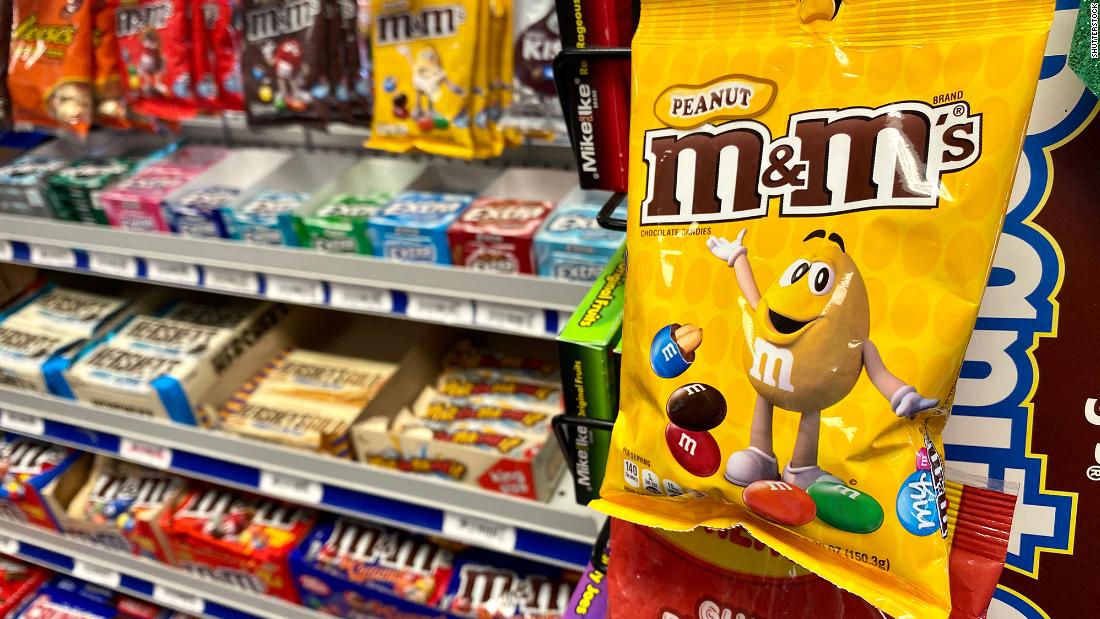
So What’s The Problem?
The cause of the issues is soy lecithin. According to an article from Live Strong, soy lecithin contains genetically engineered soy, which has been shown to reduce pancreatic function in rats fed the substance.
It just took five days of consuming the GM soy for the pancreatic cells to change. However, after giving up the GM soy for 30 days, these modifications were undone.
A substance called fenistein, which may have detrimental effects on fertility and reproductive skills was also discovered to be present in soy lecithin.
According to a Johns Hopkins study, males developing sexually who were given soy lecithin were at risk for long-term consequences like irregular reproduction.
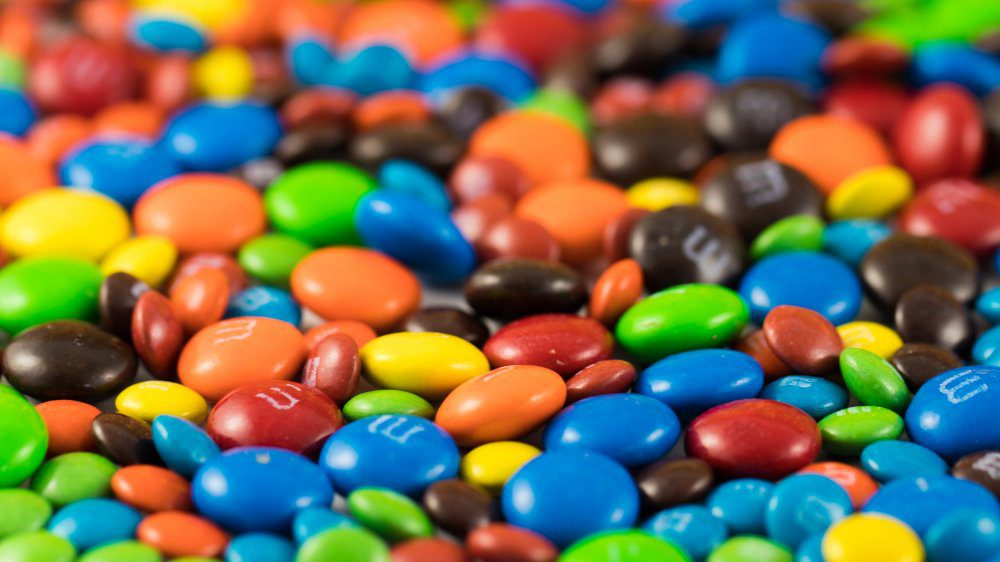
Dangers of Food Dyes In M&M’s
Each year, almost 15 million pounds of dyes are added to our food supply. Because of the widespread use of sweets like M&Ms, the use of these dyes has increased five-fold since 1955.
That should cause us great anxiety.
Many sweets (including M&Ms), gums, cereals, beverages, toothpaste, and mouthwashes contain blue #1 color, commonly referred to as “Brilliant Blue FCF.”
The FDA banned meals containing the Blue #1 dye in 2003 after determining that people were passing away due to the refractory hypotension and metabolic acidosis that occurred.
It also caused the patients’ colons to glow vivid blue.
As Blue #1 passes the blood-brain barrier and is absorbed more, experts said at the 2011 FDA Food Advisory hearings that it interacts with the body very differently from other food colors.
Despite being outlawed for use in medicine, Blue #1 is nevertheless present in commercial products like M&Ms.
Additionally, it has been reported by the Center for Science in the Public Interest that Yellow #6 dye contains known carcinogens. One of them is benzidine, which we have previously talked about.
Six out of 11 tests conducted on lab animals revealed cancer and severe alterations.
Just two of the colors included in M&Ms offer all of those dangers. And I can assure you that the others aren’t any better either. They have a long list of health issues to worry about, including hyperactivity, allergies, nettle rash, headaches, and cancer.
The availability of natural, secure color alternatives only makes the situation worse. Simply put, businesses like Mars are opting not to utilize them.
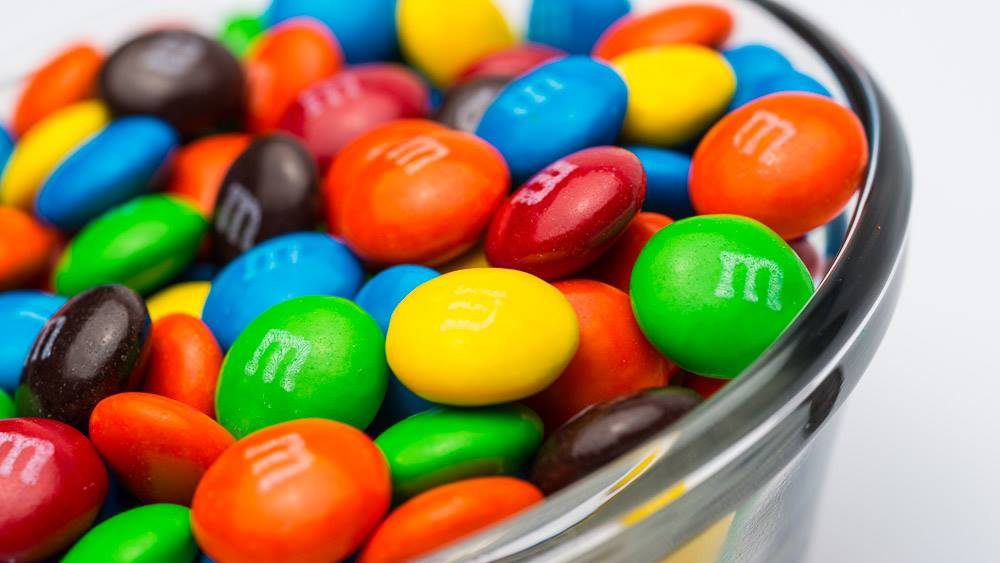
Is there a healthy M&M?
Peanut M&Ms are surprisingly healthy for the following reasons.
Peanut M&M’s are a good source of protein.
Protein is essential for our bodies in several ways. It helps build and repair our muscles, plays a role in immunity, and can help keep us feeling fuller for longer after eating. So if you’re looking for a snack that will give you an energy boost and keep you going until your next meal, then peanut M&M’s are a great option.
Peanut M&M’s can help to lower cholesterol levels.
Cholesterol is fat that can build up in our arteries and cause heart disease. Peanuts contain plant sterols which have been shown to reduce the amount of cholesterol in our bodies. So, if you’re concerned about your cholesterol levels, snacking on peanut M&M’s could be a helpful way to reduce your risk of heart disease.
Peanut M&M’s are packed with antioxidants.
Antioxidants are essential because they help to protect our cells from damage caused by free radicals. Free radicals are unstable molecules that can cause cell damage and lead to conditions like cancer and heart disease. By eating foods high in antioxidants, we can help reduce our risk of developing these conditions. Peanuts are a great source of antioxidants, so munching on some peanut M&M’s is a delicious way to get your daily dose.
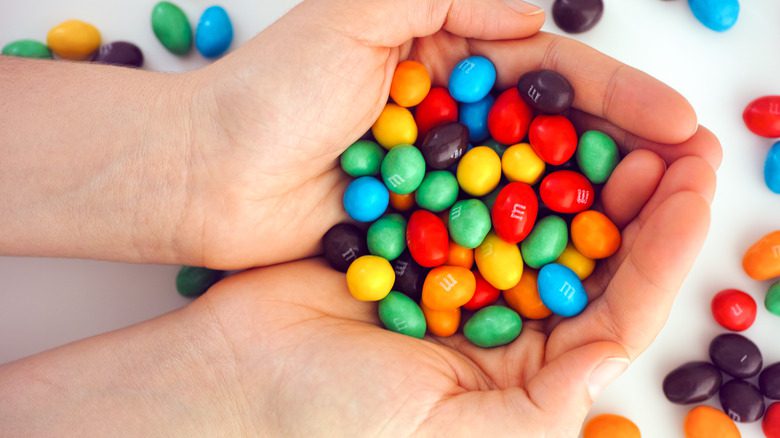
Final Thoughts
M&Ms are not necessarily bad for you but are not the healthiest snack choice either. If you are looking for a protein-packed, antioxidant-rich snack, then peanut M&Ms are a good option. However, if you are concerned about your cholesterol levels or the potential risks of food dyes, then you may want to choose a different snack. Just remember to enjoy every food in moderation!
Frequently Asked Questions with answers
How many M&Ms can I eat a day?
A fun-size pack of plain M&Ms has roughly 17 of them, and two will keep you within your daily limit. That implies that you could consume one M&M every 15 minutes for the duration of an 8-hour workday.
Which M&Ms are the healthiest?
Surprisingly, peanut M&Ms are healthier than nut-and-chocolate options like Snickers, Baby Ruths, and the incredibly calorie-dense Reese's Peanut Butter Cups. This is because they contain more protein, fiber, and healthy unsaturated fats.
How much M&Ms should you eat?
Two M&Ms® should be consumed at once. Always. Consuming several at once is gluttonous.
How many M&Ms are too many?
You will experience heat, coughing, and shortness of breath after eating 700 M&Ms. Many patients describe it as feeling like their "lungs are on fire." In addition, you'll have some excruciating muscle cramps and aches after eating 440 M&Ms.




